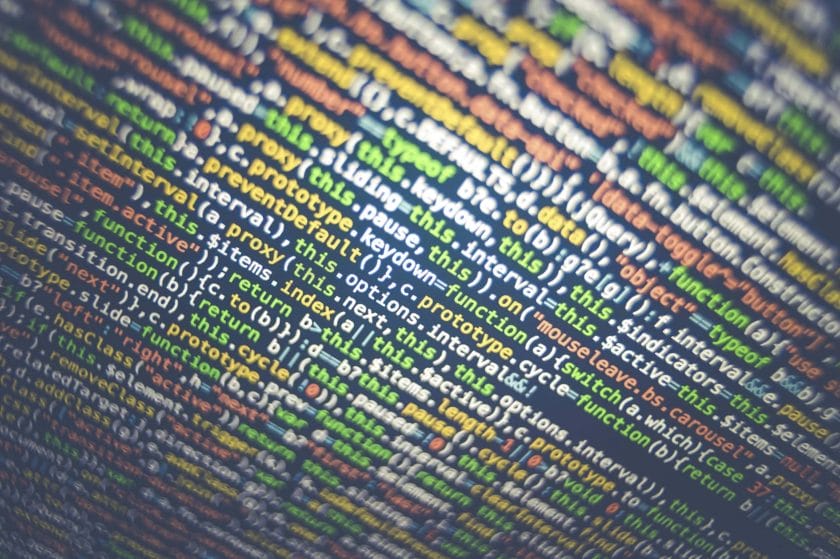Web3 is the future of the internet, offering a decentralized and secure way to access information and interact with others online. But how exactly does it work? In this article, we’ll explore the key components of Web3 technology and how they come together to create a new era of online communication and commerce.
What is web3 and how does it differ from web2?
Web 2.0
Back in the early days of the internet, we had Web 1.0, which was essentially a collection of static HTML pages with very little interactivity. Then came Web 2.0, which brought us dynamic websites, social media platforms, and online collaboration tools. With Web 2.0, users could create and share content easily, interact with each other through comments and likes, and access a wealth of information at their fingertips.
Web 3.0
Web 3.0 takes things to the next level by introducing decentralized technologies such as blockchain that enable trustless interactions between users without the need for intermediaries. In a Web 3.0 world, users have full control over their data and can transact directly with each other using digital currencies or other forms of value exchange.
Key differences between Web 2.0 and Web 3.0:
- Centralized vs Decentralized: Web 2.0 relies on centralized servers controlled by companies like Google or Facebook to store user data and facilitate transactions, while Web 3.0 uses decentralized networks like Ethereum or Polkadot that are run by a community of nodes.
- Intermediaries vs Direct Transactions: In a Web 2.0 world, intermediaries such as banks or payment processors are required to facilitate transactions between users; in contrast, Web 3.0 enables direct peer-to-peer transactions without intermediaries.
- Closed vs Open Systems: Most Web 2.0 platforms are closed systems that are owned and controlled by a single entity; in contrast, Web 3.0 is an open system that allows anyone to participate and contribute to the network.
How does web3 enable decentralized applications?
Web 3.0 enables the development of decentralized applications (dApps) that run on a blockchain or other decentralized network. These dApps are built using smart contracts, which are self-executing programs that can automate complex transactions and enforce rules without the need for intermediaries.
Key features of dApps:
- Decentralized: dApps run on a distributed network rather than a centralized server, making them more resilient to censorship and single points of failure.
- Trustless: Because dApps use smart contracts to enforce rules and automate transactions, there is no need for users to trust intermediaries such as banks or payment processors.
- Open: Anyone can participate in a dApp without needing permission from a central authority.
- Transparent: All transactions on a blockchain-based dApp are recorded on a public ledger, making them transparent and auditable.
What are the key components of a web3 stack?
A Web 3.0 stack typically consists of several layers that work together to enable decentralized applications and services.
The key components of a Web 3.0 stack include:
- Blockchain Protocol Layer: This layer provides the underlying infrastructure for Web 3.0 by enabling secure, trustless transactions between users. Popular blockchain protocols include Ethereum, Bitcoin, and Polkadot.
- Smart Contract Layer: Smart contracts are self-executing programs that run on top of blockchain protocols and enable developers to build complex decentralized applications with automated rules and logic.
- Distributed Storage Layer: Decentralized storage solutions like IPFS (InterPlanetary File System) enable users to store and share data in a distributed, trustless manner.
- Identity and Access Layer: This layer provides tools for managing user identities and access to Web 3.0 applications and services without relying on centralized authorities.
- User Interface Layer: The user interface layer provides the front-end interface for Web 3.0 applications, enabling users to interact with decentralized services through web browsers or mobile apps.
How do smart contracts work in a web3 environment?
Smart contracts are self-executing programs that run on a blockchain or other decentralized network. They are used to automate complex transactions and enforce rules without the need for intermediaries such as banks or payment processors.
When a smart contract is deployed on a blockchain, it becomes part of the blockchain’s immutable ledger, meaning that its code cannot be altered once it has been deployed. Smart contracts can be programmed to execute automatically when certain conditions are met, such as when a specific date is reached or when a certain amount of cryptocurrency is transferred.
Benefits of using smart contracts:
- Trustless: Smart contracts eliminate the need for intermediaries such as banks or payment processors by automating transactions and enforcing rules in a trustless manner.
- Efficient: Because smart contracts are self-executing, they can automate complex processes more efficiently than traditional methods.
- Transparent: All transactions executed through a smart contract are recorded on the blockchain’s immutable ledger, making them transparent and auditable.
What role do blockchain technologies play in web3?
Blockchain technologies provide the underlying infrastructure for Web 3.0 by enabling secure, trustless transactions between users without the need for intermediaries. Blockchains use cryptographic algorithms to create a distributed, immutable ledger of transactions that cannot be altered once they have been recorded.
Benefits of using blockchain in Web 3.0:
- Decentralization: Blockchains enable trustless interactions between users without the need for intermediaries, making them more resilient to censorship and single points of failure.
- Security: Because all transactions on a blockchain are cryptographically secured, it is virtually impossible for malicious actors to tamper with the data.
- Transparency: All transactions on a blockchain are recorded on a public ledger, making them transparent and auditable.
How does web3 enable peer-to-peer transactions without intermediaries?
Web 3.0 enables peer-to-peer transactions by using decentralized networks such as blockchains that allow users to transact directly with each other without needing intermediaries such as banks or payment processors.
In a Web 3.0 environment, users can send and receive digital currencies or other forms of value exchange directly through their wallets or other decentralized applications. Transactions are validated by nodes on the network rather than centralized authorities, ensuring that they are secure and tamper-proof.
Benefits of peer-to-peer transactions:
- Lower fees: Because there are no intermediaries involved in peer-to-peer transactions, users can avoid paying high fees charged by banks or payment processors.
- Faster processing times: Peer-to-peer transactions can be processed more quickly than traditional methods because they do not require approval from centralized authorities.
- Greater control over personal data: In a peer-to-peer transaction, users have full control over their personal data and do not need to share it with third-party intermediaries.
What are some examples of dApps built on the web3 infrastructure?
There are many decentralized applications (dApps) that have been built on the Web 3.0 infrastructure, ranging from financial services to gaming and social media platforms.
Some popular examples of dApps include:
- Uniswap: A decentralized exchange that allows users to trade cryptocurrencies without intermediaries.
- Aave: A decentralized lending platform that enables users to borrow and lend cryptocurrencies without requiring approval from banks or other centralized authorities.
- CryptoKitties: A blockchain-based game that allows users to breed and trade virtual cats using Ethereum tokens.
- Brave Browser: A privacy-focused web browser that rewards users with cryptocurrency for viewing ads.
How does web3 ensure data privacy and security for users?
Web 3.0 provides several mechanisms for ensuring data privacy and security for users, including encryption, decentralization, and user-controlled identity management.
By using encrypted communications protocols such as HTTPS or TLS, Web 3.0 applications can ensure that user data is transmitted securely over the internet. Decentralized networks like blockchains provide an additional layer of security by eliminating single points of failure and making it difficult for malicious actors to tamper with the data.
User-controlled identity management tools such as digital wallets or self-sovereign identity systems enable users to maintain control over their personal information and decide who has access to it.
Benefits of Web 3.0 for data privacy and security:
- User-controlled data: Web 3.0 enables users to maintain control over their personal data rather than relying on centralized authorities such as social media platforms or banks.
- Decentralization: By using decentralized networks like blockchains, Web 3.0 can eliminate single points of failure and make it more difficult for malicious actors to tamper with the data.
- Encryption: Encrypted communications protocols such as HTTPS or TLS ensure that user data is transmitted securely over the internet.
What is the role of digital wallets in a web3 ecosystem?
Digital wallets are an essential component of the Web 3.0 ecosystem, providing users with a way to store and manage their digital assets such as cryptocurrencies or non-fungible tokens (NFTs).
Digital wallets enable users to transact directly with each other without intermediaries by securely storing private keys that allow them to access their funds on a decentralized network like Ethereum or Bitcoin.
Benefits of using digital wallets:
- User-controlled: Digital wallets enable users to maintain control over their digital assets rather than relying on centralized authorities such as banks or payment processors.
- Secure: By using encryption and other security measures, digital wallets can ensure that user funds are protected from theft or hacking.
- Interoperable: Many digital wallets support multiple blockchain networks, enabling users to transact across different platforms without needing to switch between different applications.
How does web3 support cross-chain interoperability between different blockchains?
Web 3.0 enables cross-chain interoperability by providing tools and protocols that allow different blockchains to communicate and exchange value with each other.
One example of this is the Polkadot network, which uses a unique architecture called a “parachain” that allows different blockchains to connect and interact with each other. Other projects such as Cosmos and Chainlink also provide tools for cross-chain communication and interoperability.
Benefits of cross-chain interoperability:
- Greater liquidity: Cross-chain interoperability enables users to transact across different blockchain networks, increasing the liquidity of digital assets and reducing transaction costs.
- Interoperability: By enabling different blockchains to communicate with each other, Web 3.0 can create a more interconnected and interoperable ecosystem.
- Reduced fragmentation: Cross-chain interoperability can help reduce the fragmentation of the blockchain space by enabling different projects to work together more seamlessly.
How can developers get started building on the web3 infrastructure?
Developers who want to build on the Web 3.0 infrastructure can get started by learning about blockchain technologies and smart contracts. There are many resources available online, including tutorials, forums, and developer communities.
Some popular tools for building Web 3.0 applications include Ethereum’s Solidity programming language, IPFS for distributed storage, and Truffle for smart contract development.
Steps for getting started with web3 development:
- Learn about blockchain technologies and how they work
- Familiarize yourself with smart contract development using languages such as Solidity or Vyper
- Explore decentralized storage solutions like IPFS
- Join developer communities or attend hackathons to connect with other Web 3.0 developers
How do governance mechanisms work in a decentralized system like web3?
In a decentralized system like Web 3.0, governance mechanisms are used to ensure that decisions are made in a transparent and democratic manner without relying on centralized authorities.
One example of this is the DAO (Decentralized Autonomous Organization), which is a type of organization that is run entirely by smart contracts on a blockchain. In a DAO, token holders can vote on proposals and make decisions about the future direction of the organization.
Other governance mechanisms used in Web 3.0 include quadratic voting, futarchy, and liquid democracy, all of which aim to provide more democratic and transparent decision-making processes.
Benefits of decentralized governance:
- Transparency: Decentralized governance mechanisms enable all stakeholders to participate in decision-making processes and ensure that decisions are made in a transparent manner.
- Democratic: By enabling all stakeholders to have a say in decision-making processes, decentralized governance can create a more democratic system.
- Resilience: Decentralized governance mechanisms can help ensure that decisions are not influenced by centralized authorities or single points of failure.
What challenges does the adoption of web3 face, and how can they be overcome?
The adoption of Web 3.0 faces several challenges, including scalability issues, regulatory uncertainty, and user adoption.
One major challenge is scalability; current blockchain networks such as Ethereum are limited in their transaction throughput capacity. This has led to high fees and slow processing times for users. However, solutions such as layer-2 scaling solutions like Polygon or Optimism are being developed to address these issues.
Another challenge is regulatory uncertainty; many governments around the world have yet to establish clear regulations around cryptocurrencies and other Web 3.0 technologies. This has created a climate of uncertainty for businesses operating in the space.
Finally
How could a fully-realized Web 3 change the way we interact with technology and each other online?
A fully-realized Web 3 has the potential to revolutionize the way we interact with technology and each other online. With Web 3, users will have more control over their personal data and privacy, which will lead to a more secure and transparent internet. This could be achieved through decentralized networks that are not controlled by any single entity, but instead run on a distributed network of computers.
Increased Decentralization
One of the key features of Web 3 is increased decentralization. This means that instead of relying on centralized servers owned by large corporations or governments, users will be able to connect directly to each other in peer-to-peer networks. This will allow for greater security and privacy, as well as more control over how data is shared and used.
Examples:
- The development of blockchain technology is one example of how Web 3 can enable greater decentralization. Blockchain allows for secure transactions without the need for intermediaries such as banks or payment processors.
- Another example is the creation of decentralized social media platforms like Mastodon or Diaspora. These platforms allow users to connect directly with each other without relying on a central authority like Facebook or Twitter.
In what ways will Web 3 transform industries such as finance, healthcare, or education?
The potential impact of Web 3 on various industries cannot be overstated. From finance and healthcare to education and beyond, there are many ways in which this technology could transform the way we live our lives.
Decentralized Finance (DeFi)
One area where Web 3 is already having a significant impact is in decentralized finance (DeFi). DeFi refers to financial applications built on blockchain technology that allow for peer-to-peer transactions without the need for intermediaries like banks or financial institutions.
Examples:
- Decentralized exchanges (DEXs) like Uniswap and SushiSwap allow users to trade cryptocurrencies without relying on centralized exchanges.
- Lending platforms like Aave and Compound allow users to earn interest on their cryptocurrency holdings by lending them out to other users.
Healthcare
The healthcare industry could also benefit greatly from the increased security and privacy offered by Web 3. With decentralized networks, patients could have more control over their own medical records and data, while also ensuring that sensitive information is kept secure.
Examples:
- The MedRec project is a blockchain-based platform that allows patients to securely store and share their medical records with healthcare providers.
- The Health Nexus platform uses blockchain technology to create a secure, decentralized network for sharing health data between patients, doctors, and researchers.
Education
In the field of education, Web 3 has the potential to transform the way we learn and teach. Decentralized networks could enable greater collaboration between students and educators, as well as more personalized learning experiences.
Examples:
- The Knowledge.io platform uses blockchain technology to incentivize learning by rewarding users with tokens for completing educational tasks or quizzes.
- The ODEM platform aims to create a decentralized marketplace where students can connect directly with educators and other service providers for personalized learning experiences.
In conclusion, Web3 is a decentralized platform that eliminates the need for intermediaries and ensures transparency and security. It enables users to have full control over their data and transactions. If you want to learn more about how we can help you leverage AI technology, get in touch with us today! We’d love to chat and show you our services.

What is Web3 in simple terms?
Web 3.0, also referred to as Web 3, is the future vision of the internet, where a majority of users will connect through a decentralized network and have control over their own data. This article has educated us about the emerging technologies that are expected to evolve and revolutionize the web in the coming years.
How is Web3 being used?
Web3 technology enables ownership through non-fungible tokens (NFTs), which cannot be taken away by anyone, including the creators of the game. Moreover, if you decide to stop playing the game, you can sell or trade your in-game items on open markets and recover their value.

What does Web3 run on?
In Ethereum, Web3 describes decentralized applications that operate on the blockchain and enable users to engage without having to monetize their personal information. These apps promote inclusivity and accessibility for all users.
How will Web3 make money?
Investing in or trading cryptocurrencies is the primary way for individuals to make money using Web3 technology. Cryptocurrencies refer to digital assets that operate on a decentralized blockchain network.
What is Web3 in real life example?
Utilizing Web 3.0 technology, AI-powered chatbots can provide customers with personalized experiences. With the ability to access confidential data across multiple devices and applications, the integration of Web 3.0 in AI-based chatbots can offer greater interoperability.
How will Web3 change the world?
Web3 technologies have the potential to provide individuals with greater control over their information and assets, as well as the ability to participate in decentralized networks and platforms. This has the potential to result in increased economic and social power.









